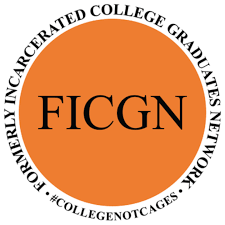Foreword
The year 2016 was pivotal for prison education programs in the United States. With the launch of the Second Chance Pell pilot program by President Barack Obama, incarcerated students at select institutions were granted access to Pell Grants to pursue postsecondary education. In recent years, we have seen a consistent increase in the number of colleges that are interested in developing postsecondary education pathways for these students. With Pell Grant access fully restored as of July 2023, the Formerly Incarcerated College Graduates Network (FICGN) has identified a gap in the existing resources and support available for instructors teaching in a prison setting for the first time. While correctional institutions provide orientation and training sessions to help instructors navigate the logistical and security aspects of teaching in such facilities, these efforts often have limitations. Notably, they tend to lack comprehensive guidance for instructors on effectively engaging students from a diverse range of cultural backgrounds and tailoring their pedagogical approaches to support students as they pursue their studies within the unique context of a correctional facility.
 In response to this identified gap, FICGN has collaborated with Jobs for the Future’s Center for Justice & Economic Advancement to support the development of high-quality postsecondary education programs in prisons that pave the way to economic advancement. Together, we have formulated the following guidance to offer support to program staff members and instructors. The recommendations presented in this resource are designed to enhance the effectiveness of future orientation and training initiatives. Our aim is to ensure that these programs adequately address the needs of instructors and other key stakeholders who will directly interact with students who are incarcerated for the first time.
In response to this identified gap, FICGN has collaborated with Jobs for the Future’s Center for Justice & Economic Advancement to support the development of high-quality postsecondary education programs in prisons that pave the way to economic advancement. Together, we have formulated the following guidance to offer support to program staff members and instructors. The recommendations presented in this resource are designed to enhance the effectiveness of future orientation and training initiatives. Our aim is to ensure that these programs adequately address the needs of instructors and other key stakeholders who will directly interact with students who are incarcerated for the first time.
The contents of this resource are grounded in evidence-based practices relevant to the context of instructors’ experiences teaching for prison education programs. Sources for this evidence include the journal article “Learning From Teachers: A Needs Assessment of Faculty in Postsecondary Correctional Education,” which calls for programs to provide all new instructors and staff members with thorough orientation and professional development opportunities that address both correctional and postsecondary program policies, protocols, and best practices.i Additional resources that contributed to the development of this work are identified in the Resources section of this paper.
FICGN recognizes that correctional institutions have distinct cultures, governed by rules and customs that are often unfamiliar to individuals and organizations lacking prior experience working in prisons, jails, or similar settings. To provide professionals who are new to this field with a better understanding of the realities of delivering college programs in correctional environments, this guide includes occasional quotes from FICGN members offering insights drawn from their firsthand experiences within the prison education landscape.


 In response to this identified gap, FICGN has collaborated with Jobs for the Future’s Center for Justice & Economic Advancement to support the development of high-quality postsecondary education programs in prisons that pave the way to economic advancement. Together, we have formulated the following guidance to offer support to program staff members and instructors. The recommendations presented in this resource are designed to enhance the effectiveness of future orientation and training initiatives. Our aim is to ensure that these programs adequately address the needs of instructors and other key stakeholders who will directly interact with students who are incarcerated for the first time.
In response to this identified gap, FICGN has collaborated with Jobs for the Future’s Center for Justice & Economic Advancement to support the development of high-quality postsecondary education programs in prisons that pave the way to economic advancement. Together, we have formulated the following guidance to offer support to program staff members and instructors. The recommendations presented in this resource are designed to enhance the effectiveness of future orientation and training initiatives. Our aim is to ensure that these programs adequately address the needs of instructors and other key stakeholders who will directly interact with students who are incarcerated for the first time.